Welcome to one of the most active flamenco sites on the Internet. Guests can read most posts but if you want to participate click here to register.
This site is dedicated to the memory of Paco de Lucía, Ron Mitchell, Guy Williams, Linda Elvira, Philip John Lee, Craig Eros, Ben Woods, David Serva and Tom Blackshear who went ahead of us.
We receive 12,200 visitors a month from 200 countries and 1.7 million page impressions a year. To advertise on this site please contact us.
|
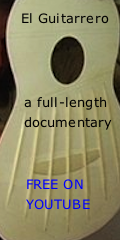
|
|
Bulerias time signature
|
You are logged in as Guest
|
|
Users viewing this topic: none
|
|
Login  | |
|

   
NormanKliman
Posts: 1143
Joined: Sep. 1 2007

|
 RE: Bulerias time signature (in reply to mrMagenta) RE: Bulerias time signature (in reply to mrMagenta)
|
|
|
Hey Mr. Magenta, I agree entirely with what Pimientito and Ricardo have said. It may seem strange, but it doesn't take long to get used to the placement of the bar lines. The only real problem that I can see is that, if you keep the score 12 beats to a staff, a lot of ideas are going to start at the end of one staff and continue on the following staff. But it doesn't take long before you "stop forgetting" that. It may seem a bit strange to insist on using the same format for a different style, but, as Ricardo's pointed out, bulerías is just a faster quarter note. It's also a good way to keep an eye on what's happening at beats 7-8 (or at least, it standardizes everything), insofar as relating it to soleá.
More importantly, and to paraphrase Pimientito, every experienced flamenco you'll ever meet will agree that the first long interval falls on 12, not 1. Unless of course they reject the whole idea of assigning numbers to the beats, which is also pretty common, but I think even in those cases they would end up agreeing that "12 is 12." Changing 12 to 1 makes sense if you look at if from outside the context of flamenco (nothing wrong with that, though). Hope it's understood that I'm NOT trying to say that someone like Agujetas counts.
I rarely count past 10 because it's a hassle taking off my shoes. And please don't ask me to count to 21... 
Once I was listening to a cassette tape of Chocolate singing soleá, and wanted to skip ahead to another part. I accidentally fast-forwarded while it was still playing, and a perfect bulerías emerged. Parts of it were more than just similar, they were perfect! Since some of those bulerías cantes come from soleá, I always thought it'd be interesting to experiment with some recordings, speeding them up (without changing pitch) to see how similar the soleás are to their bulería counterparts.
IMO it's as simple as this: If it were supposed to start on 12, that beat would be called 1 instead of 12. Don't know if this has been mentioned, but I would definitely write guajiras etc. starting on the equivalent of beat 12. But not soleá, bulerías, etc, which, IMO, are a sophisticated development of the basic "3+3+2+2+2" thing that you hear in guajiras.
Henrik!!! I heard some excellent toques on your site, and it's got a really cool layout, too!
_____________________________
Be here now.
|
|
|
|
REPORT THIS POST AS INAPPROPRIATE |
Date Feb. 6 2009 8:42:22
 |
|

   
NormanKliman
Posts: 1143
Joined: Sep. 1 2007

|
 RE: Bulerias time signature (in reply to mrMagenta) RE: Bulerias time signature (in reply to mrMagenta)
|
|
|
mrMagenta, yeah with just about any system you use, there's going to be something that isn't made perfectly clear on paper, at least without some kind of text explaining the system. It's clear that using four measures of 3/4 doesn't show the accent on 8, for example.
KenK: It's not about ignoring the bar lines, just interpreting them in a different way. Bulerías comes from soleá, and there's a strong sense of one-two-THREE, with something very similar happening if you take it in sixes, tapping your foot on the even beats (12-2-4, 6-8-10). So putting the bar line after 12 indicates the end of a rhythmic cycle, rather than the beginning. It's one of those differences that all the flamencologists point out, that flamenco threes are different from a waltz rhythm (ONE-two-three). But there are several ways to write out bulerías, and they all work. And it's certainly not like any rules have been established, so a different system wouldn't be wrong. I think it's important to remember, though, that 12 isn't always a strong beat.
Ricardo, you must have posted just a second before I did! Probably 3 seconds... 
_____________________________
Be here now.
|
|
|
|
REPORT THIS POST AS INAPPROPRIATE |
Date Feb. 6 2009 14:43:36
 |
|

   
NormanKliman
Posts: 1143
Joined: Sep. 1 2007

|
 RE: Bulerias time signature (in reply to KenK) RE: Bulerias time signature (in reply to KenK)
|
|
|
Hi Ken,
quote:
the conventional method actually works fine.
Yeah, you're right, it does work fine. In fact, placing the first barline before 12 (using four measures of 3/4) comes a little closer to accurately mapping out the compás with a conventional understanding of sheet music. I think the use of a compound time signature, as mrMagenta has suggested, would probably be the most accurate system, although it would clutter the staff with bar lines. For siguiriyas, I prefer a three-part signature using 2/4, 6/8 and 1/4, with thicker bar lines to separate whole compases. I'd probably use 3/4 and 6/8 for guajiras, but IMO it's misleading to use that same system for bulerías. Hmmm, I think I've mentioned that already, haven't I? 

Images are resized automatically to a maximum width of 800px
 Attachment (1) Attachment (1)
_____________________________
Be here now.
|
|
|
|
REPORT THIS POST AS INAPPROPRIATE |
Date Feb. 7 2009 1:42:04
 |
|

   
El_Tortuga
Posts: 258
Joined: Aug. 11 2011
From: Canada

|
 RE: Bulerias time signature (in reply to mrMagenta) RE: Bulerias time signature (in reply to mrMagenta)
|
|
|
Soleá is the 'mother' of Alegría and Bulería. As we know, both Soleá and Alegría can finish in Bulería. For this reason, I notate all of them in 3/4 time.
Bulería by itself could be written in 3/8 time, because it is usually fast of course.
The origin of the Seguiriya compás is actually the "hemeola", which is 3/4 + 6/8 happening together, or one after the other:
3/4 counting: 1 an 2 an 3 an 1 an 2 an 3 an (duple meter)
6/8 counting: 1 2 3 4 5 6 1 2 3 4 5 6 (triple meter)
If we alternate them, we get the hemeola as introduced by Gaspar Sanz, way back in the day:
1 2 3 4 5 6 1 an 2 an 3 an
(If you don't know who Gaspar Sanz is, look him up!)
For reasons I do not know, Seguiriya compás inverted the hemeola:
1 an 2 an 3 an 1 2 3 4 5 6
And then, again for reasons I do not know, Seguiriya falsetas don't begin on beat 1 of the 3/4, they begin on beat 2.
|| 2 an 3 an 1 2 3 4 5 6 1 an || 2 an 3 an 1 2 3 4 5 6 1 an ||
Since this way of counting is a bit awkward, many prefer just to number the accents:
|| 1 an 2 an 3 an a 4 an a 5 an || 1 an 2 an 3 an a 4 an a 5 an ||
But this does NOT mean Seguirya has 5 beats! It's still a compound meter.
Isn't counting flamenco fun? LOL 
A similar thing happens in other palos. Take Fandango de Huelva for example. Many falsetas will begin on beat 11 (if you count your de Huelva in 12 beats), or beat 5 (if you count your de Huelva in 6 beats).
If we take the hemeola rhythms and MERGE them, we can transcribe for Fandango de Huelva and Sevillanas:
Two measures of 3/4 adding up to six beats: || 1 2 3 | 4 5 6 ||
Counting duple meter: || 1 2 3 | 4 5 6 ||
Now counting triple meter: || 1 2 3 | 4 5 6 ||
Now for the merge: || 1 2 3 | 4 5 6 ||
I have a few more things to add, but I'll do that later. 
_____________________________
http://liveguitartutor.com
http://www.youtube.com/user/Duendito
|
|
|
|
REPORT THIS POST AS INAPPROPRIATE |
Date Mar. 11 2012 20:05:37
 |
|
 New Messages New Messages |
 No New Messages No New Messages |
 Hot Topic w/ New Messages Hot Topic w/ New Messages |
 Hot Topic w/o New Messages Hot Topic w/o New Messages |
 Locked w/ New Messages Locked w/ New Messages |
 Locked w/o New Messages Locked w/o New Messages |
|
 Post New Thread
Post New Thread
 Reply to Message
Reply to Message
 Post New Poll
Post New Poll
 Submit Vote
Submit Vote
 Delete My Own Post
Delete My Own Post
 Delete My Own Thread
Delete My Own Thread
 Rate Posts
Rate Posts
|
|
|
Forum Software powered by ASP Playground Advanced Edition 2.0.5
Copyright © 2000 - 2003 ASPPlayground.NET |
9.423828E-02 secs.
|


 Printable Version
Printable Version





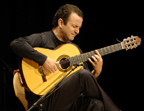
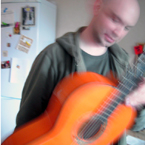


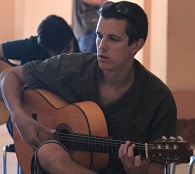




 Didn't mean it to come across that way. I thought I was repeating myself too much, and I suddenly remembered that animated GIF file. A broken record would have made a better metaphor.
Didn't mean it to come across that way. I thought I was repeating myself too much, and I suddenly remembered that animated GIF file. A broken record would have made a better metaphor. 
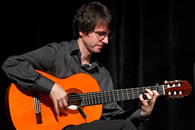


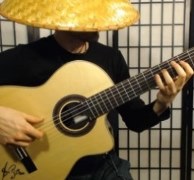
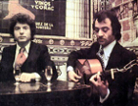

 New Messages
New Messages No New Messages
No New Messages Hot Topic w/ New Messages
Hot Topic w/ New Messages Hot Topic w/o New Messages
Hot Topic w/o New Messages Locked w/ New Messages
Locked w/ New Messages Locked w/o New Messages
Locked w/o New Messages Post New Thread
Post New Thread